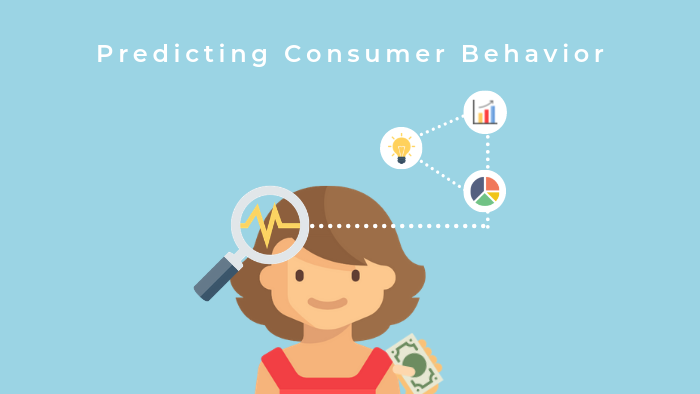
Driving Growth with Actionable Insights from Customer Feedback Analysis in AI Marketing
November 15, 2023
5 Ways AI is Revolutionizing Marketing and What You Can Do About It
November 16, 2023In the dynamic landscape of digital marketing, businesses are constantly seeking innovative ways to connect with their target audience. Customer segmentation has emerged as a pivotal strategy, allowing companies to tailor their marketing efforts to specific groups of consumers. With the advent of artificial intelligence (AI), the possibilities for refining customer segmentation have expanded exponentially. In this blog post, we’ll delve into five advanced techniques that leverage AI to enhance customer segmentation in marketing.

Predictive Analytics: Anticipating Customer Behavior
In the ever-evolving landscape of digital marketing, staying ahead of customer preferences is a perpetual challenge. Predictive analytics, powered by artificial intelligence (AI), emerges as a potent tool for businesses seeking not just to understand historical data but to anticipate future customer behavior. This technique leverages sophisticated machine learning algorithms to sift through vast datasets, identifying patterns and trends that might elude human analysis.
The Power of Prediction:
Predictive analytics is not about fortune-telling; it’s about making informed decisions based on probabilities. By analyzing historical customer data, including past purchases, browsing behavior, and interactions with marketing campaigns, AI algorithms can discern patterns that indicate potential future actions. For instance, if a customer tends to make a purchase in a particular product category at a specific time of year, predictive analytics can anticipate and prepare marketing strategies accordingly.
Tailoring Campaigns to Predictions:
The true value of predictive analytics lies in its ability to inform targeted marketing campaigns. Instead of employing generic strategies, businesses can tailor their messages, promotions, and product recommendations based on the predicted behavior of specific customer segments. This level of personalization enhances customer engagement and increases the likelihood of conversions.
Customer Lifetime Value Optimization:
Predictive analytics extends beyond short-term predictions. By forecasting customer lifetime value (CLV), businesses can identify high-value customers and allocate resources effectively. For instance, if the algorithm predicts that a certain segment of customers is likely to have a higher CLV, marketing efforts can be concentrated on retaining and upselling to this group.
Challenges and Considerations:
While predictive analytics holds immense potential, it is not without challenges. Over-reliance on historical data can lead to biases, and external factors such as economic changes or global events may influence customer behavior in unpredictable ways. Continuous refinement of algorithms and an understanding of the limitations of predictive analytics are crucial for successful implementation.

Natural Language Processing (NLP): Unveiling Customer Sentiments
In an era dominated by social media and online reviews, understanding customer sentiments is paramount for effective marketing. Natural Language Processing (NLP) is a branch of AI that empowers machines to understand and interpret human language. When applied to customer segmentation, NLP becomes a powerful tool for extracting valuable insights from textual data, such as reviews, social media posts, and customer feedback.
Decoding Customer Opinions:
NLP goes beyond simple keyword analysis. It can comprehend the context, tone, and nuances of customer expressions. For instance, by analyzing product reviews, businesses can gain insights into specific features that customers appreciate or dislike. Understanding the sentiment behind customer feedback allows marketers to tailor their messaging to resonate with specific customer segments.
Social Media Listening:
Social media platforms serve as a treasure trove of customer opinions. NLP algorithms can sift through vast amounts of social media data, identifying trends and sentiments associated with a brand or product. This real-time analysis enables businesses to respond promptly to emerging trends, address concerns, and capitalize on positive sentiments.
Personalized Customer Interactions:
By integrating NLP into customer relationship management (CRM) systems, businesses can personalize interactions based on individual customer sentiments. For example, if NLP identifies a customer expressing frustration on social media, the CRM system can trigger a personalized response or offer to resolve the issue, demonstrating a commitment to customer satisfaction.
Multilingual Capabilities:
NLP’s ability to process multiple languages is particularly valuable in global markets. Businesses operating internationally can use NLP to analyze customer sentiments across different regions and adapt their marketing strategies to cultural nuances and language preferences.
Ethical Considerations:
While NLP brings immense value, ethical considerations must be taken into account. Privacy concerns, biases in language processing, and the responsible handling of customer data are critical aspects that businesses must address to build and maintain trust.

Behavioral Clustering: Grouping Based on Actions
Understanding customer behavior is at the core of effective marketing, and behavioral clustering takes this understanding to a new level. This advanced technique involves grouping customers based on their interactions with a brand, whether it’s website visits, clicks, or purchase history. By identifying distinct behavioral clusters, businesses can tailor their marketing strategies to the specific needs and preferences of each group.
Unveiling Patterns through Behavioral Data:
Behavioral clustering relies on analyzing extensive datasets related to customer actions. This can include the frequency and recency of purchases, the pages visited on a website, the time spent on each page, and even the sequence of actions leading to a conversion. By identifying patterns in this data, AI algorithms categorize customers into distinct clusters based on similarities in their behaviors.
Personalized Campaigns for Each Cluster:
Once behavioral clusters are identified, marketers can create highly targeted and personalized campaigns for each group. For example, customers who frequently browse a specific product category but haven’t made a purchase might receive tailored promotions to encourage conversions. On the other hand, loyal customers who make regular transactions might be rewarded with exclusive offers or loyalty programs.
Dynamic Adaptation to Customer Evolution:
One of the key advantages of behavioral clustering is its adaptability. As customer behaviors evolve over time, the algorithm continues to learn and update the clusters dynamically. This ensures that marketing strategies remain relevant and effective, even in industries where customer preferences may change rapidly.
Challenges in Behavioral Clustering:
While behavioral clustering offers tremendous benefits, challenges such as data quality, the complexity of interpreting behavioral patterns, and the need for continuous refinement of algorithms must be addressed. Additionally, customer behaviors can be influenced by external factors, making it essential for businesses to strike a balance between automation and human interpretation.

Image Recognition: Personalizing Visual Content
The dominance of visual content on social media platforms has transformed the way businesses engage with their audience. Image recognition, powered by AI, allows marketers to analyze visual content shared by customers, providing valuable insights into preferences, lifestyles, and brand interactions.
Beyond Keywords: Understanding Visual Context
Traditional keyword analysis falls short when it comes to understanding visual content. Image recognition takes a giant leap forward by allowing AI systems to recognize objects, scenes, and even emotions depicted in images. For instance, if a customer frequently engages with images of outdoor activities, a brand specializing in outdoor gear can tailor its marketing messages to align with the customer’s interests.
Personalized Recommendations Through Visual Insights
By analyzing images that customers engage with, businesses can make personalized product recommendations. For example, if image recognition identifies a customer’s interest in a specific type of clothing or accessories, the marketing strategy can be adjusted to showcase relevant products, increasing the likelihood of conversion.
Brand Image Analysis
Image recognition isn’t limited to user-generated content. It can also be employed to analyze how a brand is visually represented across various platforms. This includes assessing the effectiveness of visual elements in advertisements, social media posts, and website imagery. Insights from image recognition can guide brands in refining their visual identity to better resonate with their target audience.
Ethical Considerations in Image Recognition
While image recognition offers powerful capabilities, it also raises ethical considerations, particularly regarding user privacy. Businesses must be transparent about how customer images are used and ensure that data is handled responsibly. Additionally, efforts should be made to address biases in image recognition algorithms to avoid perpetuating stereotypes.
![]()
Reinforcement Learning: Adaptive Segmentation Strategies
In the fast-paced world of marketing, customer preferences and behaviors are subject to constant change. Reinforcement learning, a subset of machine learning, introduces adaptability and flexibility into customer segmentation strategies. This technique involves training algorithms to make decisions through trial and error, allowing them to learn from ongoing interactions and refine segmentation strategies over time.
Continuous Learning Through Interaction
Reinforcement learning thrives on continuous learning. As customers interact with marketing campaigns, the algorithm adapts based on the outcomes of those interactions. This iterative process allows the algorithm to fine-tune segmentation strategies, ensuring that they remain effective in dynamic market conditions.
Adapting to Shifting Customer Trends
In industries where trends and customer preferences evolve rapidly, such as fashion or technology, reinforcement learning becomes particularly valuable. Instead of relying on static segmentation models, which may quickly become outdated, businesses can embrace dynamic, learning algorithms that evolve alongside shifting market trends.
Balancing Automation and Human Oversight
While reinforcement learning offers adaptability, striking the right balance between automation and human oversight is crucial. Human input is essential for setting the initial parameters, defining the objectives, and ensuring that the algorithm aligns with the broader marketing strategy. Regular monitoring is also necessary to prevent unintended consequences and biases from emerging.
Long-Term Customer Engagement
The adaptability of reinforcement learning extends to long-term customer engagement. By continuously learning from customer interactions, the algorithm can identify changes in preferences, emerging trends, or shifts in customer behavior over extended periods. This long-term perspective enables businesses to build sustained relationships with their customer base.
Conclusion: The Future of AI in Customer Segmentation
As technology continues to advance, the synergy between artificial intelligence and customer segmentation will undoubtedly shape the future of marketing strategies. From predictive analytics anticipating future behavior to reinforcement learning ensuring adaptability, these advanced techniques empower marketers to connect with their audience on a more intimate and dynamic level. Implementing these strategies requires a strategic approach, ongoing refinement, and a commitment to ethical considerations. As businesses navigate the evolving landscape of AI marketing, the ability to leverage these advanced techniques will be a key differentiator in building lasting and meaningful connections with customers.


